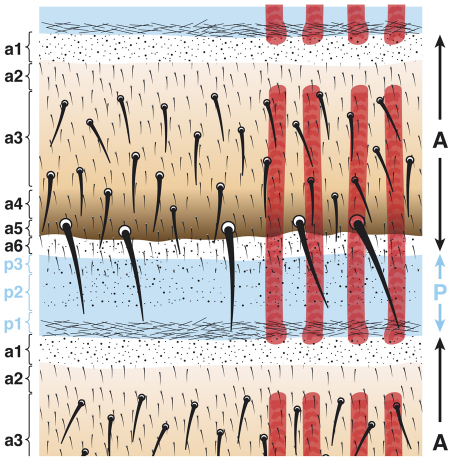Fig. 2.
The cuticle of an adult abdominal segment. The epidermis of the Drosophila adult abdomen derives from nests of histoblasts that are set aside in the embryo and remain quiescent throughout the larval stages. In each adult segment, nine different cuticle types can be distinguished by means of surface structure, pigmentation and bristles. The A compartment is subdivided into a smaller anterior domain composed of a1 and a2 cuticle and a larger posterior domain formed by a3-a6 cuticle. These two regions are distinguished because their cells respond to Hh signalling differently (see Fig. 1) (Struhl et al., 1997b) and only the posterior domain requires N (see Fig. 3). Note, it is difficult to place the border precisely between a2 and a3; a2 was distinguished from a3 only by the absence of bristles (Struhl et al., 1997b). The bristles move during development (García-Bellido and Merriam, 1971) and therefore are not a reliable marker of the provenance of the epidermal cells around them. The dorsal abdominal muscles of one side are shown in red. Anterior is at the top and the posterior is at the bottom.

